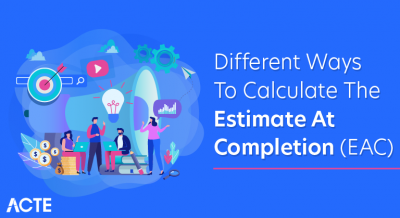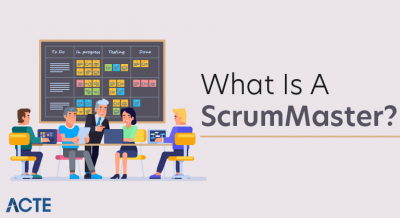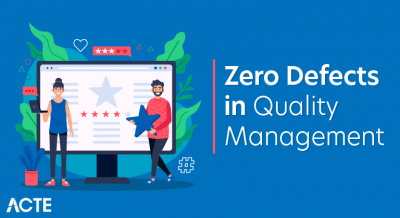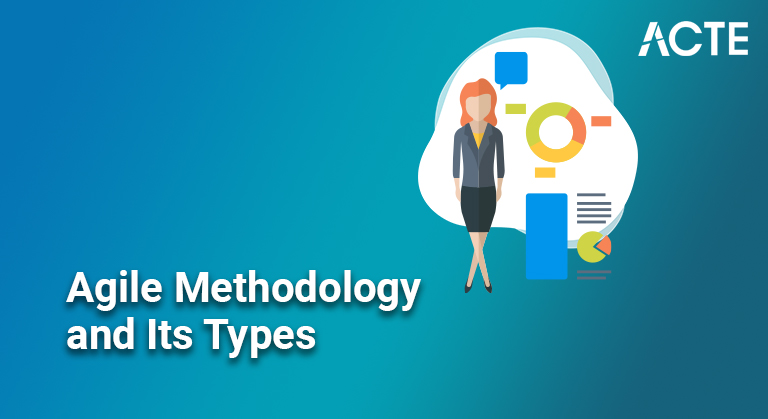
Agile is an iterative approach to software development that helps teams deliver value sooner, foster better collaboration, and release higher quality software. It was born in 2001 when 17 independent software practitioners got together and developed the Agile Manifesto.
- Agile methodology definition
- A brief history of Agile methodology
- 7 Different Types Of Agile Methodologies
- Agile Methodology Features
- What are the Principles of Agile Methodology
- Conclusion
- Agile methodology is a kind of undertaking the executives cycle, basically utilized for programming advancement, where requests and arrangements advance through the cooperative exertion of self-coordinating and cross-practical groups and their clients.
- The Agile system is an assortment of rules that esteem versatility and adaptability. Spry intends to give better responsiveness to changing business needs and hence centers around empowering groups to convey in serviceable augmentations.
- Coming from the qualities and standards of the Agile Manifesto, it was made as a reaction to the insufficiencies of conventional improvement techniques like the Waterfall strategy. The product business is an exceptionally serious market because of the way that product is something that can be constantly refreshed. This implies that designers need to continually improve and develop their items to keep on top of the game—and the straight, successive methodology of the Waterfall strategy simply wasn’t cutting it.
Agile methodology definition :-
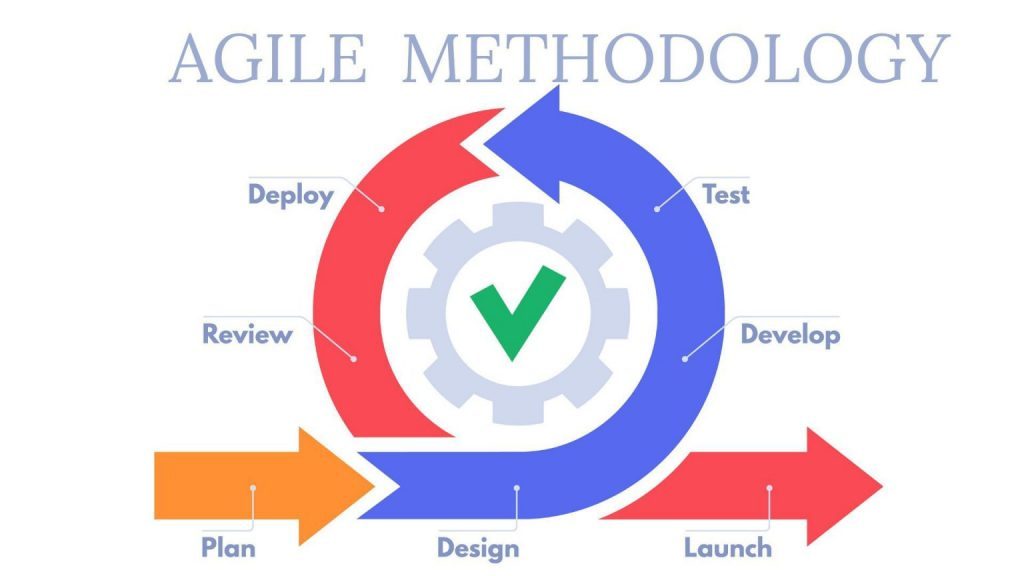
A brief history of Agile methodology :-
During the 1990s, programming improvement confronted a cycle of an emergency. Alluded to as ‘the application improvement emergency’s or ‘application conveyance slack’, the business understood that it couldn’t move quick to the point of fulfilling client needs and prerequisites—the assessed time between a business need and real application was around three years. Obviously, customary advancement models depended on a course of events approach, where improvement happened consecutively and the end result wasn’t uncovered to clients until the exceptionally last advance. This generally ruled out adaptability when it came to advance audits and changes. Along these lines, when a real application was done, almost certainly, prerequisites and frameworks of the undertaking’s unique goals had changed.
With time, cash, and endeavors squandered, and surprisingly a few tasks dropped partially through, proficient heads of the product local area thought it was the ideal opportunity for a new, invigorated methodology. Then, at that point, in 2001, in a cold, ski hold up in Utah, a gathering of industry professionals assembled to examine industry rehearses. However the gathering was set up with an essential spotlight on the conversation of improvement cycles, a few members were at that point engaging the possibility of another product advancement strategy. They all longed to solidify an interaction that legitimized what was being drilled, thus, came the formation of the Agile Manifesto.
7 Different Types Of Agile Methodologies :-
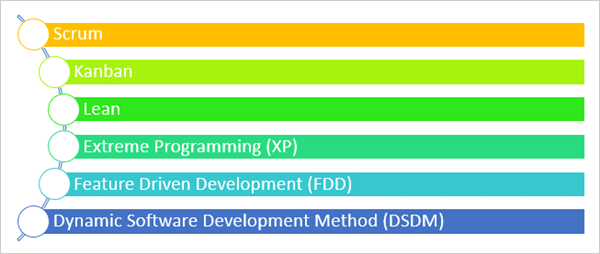
1. Kanban :
This type of methodology satisfies all of the Agile model’s 12 distinct standards. It’s a steady cycle wherein straightforwardness in programming improvement is the essential angle.
For project discernibility, a product designer utilizes Kanban sheets that follow a three-venture interaction to do, underway, and done. Cards address each work’s state. They’re utilized on the board to follow any work acted in an undertaking, giving a reasonable image of the group’s advancement and the general work process.
2. SCRUM :
Under this philosophy, a given item’s proprietor will work together with organizations and programming improvement groups to separate and outfit a framework’s capacities in what’s known as an item overabundance. Run, or the appropriation of programming programs in increases, will then, at that point, be done by arranged colleagues. Contingent upon the set cutoff time dependent on the Agile assessment led, it ordinarily takes a span of two weeks to a month for the whole interaction to be finished.
Note that there are additionally unique assessment methods, and you can find more here. On the off chance that vital, needs are moved with each cycle’s redundancy after an item excess examination is made upon conveyance. Basically saying, SCRUM centers around the activities’ the executives viewpoints.
A blend of benefits and drawbacks come while carrying out SCRUM. It can bring about slapdash programming (something that happens when groups get compelled to finish the run’s time box) and leave deficient handover records. Then again, SCRUM is likewise known to advance straightforwardness among associates. It does as such by empowering supervisory groups to recognize issues at the advancement stage. This system turns out properly for organizations that emphasis in their association with supervisory crews and item elements and conveyance.
A timeboxed day by day occasion or stand-up gatherings where all individuals examine potential impediments in their work headway will make the most out of SCRUM.
3. Outrageous Programming :
Outrageous Programming (XP) centers around consumer loyalty through consistent turn of events. This procedure underscores criticism, correspondence, and collaboration. Like SCRUM, short improvement cycles or runs are likewise present in this system. It establishes an exceptionally effective and useful climate for programming improvement groups.
In a circumstance where there are consistent and shifting client requests, the XP strategy functions admirably. Regardless of whether changes in the client demands spring up some place in the improvement cycle’s high level stages, XP spurs engineers to acknowledge them.
The task gets tried through criticism assortment in this system. It happens from the underlying stages and as the framework’s result advances. To execute any client prerequisites without issues, a spot check is additionally present.
4. Gem :
Otherwise called ‘lightweight strategy,’ gem has less documentation and undertaking audit overhead. It doesn’t have a bunch of rules or any way to deal with keep, dissimilar to every one of the past systems we’ve referenced up to this point. The Crystal system relies upon many elements, which are arranged by a few unique tones.
Each tone in the Crystal strategy family addresses a particular system. Each approach relies upon the task climate and group size. The Crystal tones are Crystal Sapphire, Crystal Diamond, Crystal Maroon, Crystal Red, Crystal Orange Web, Crystal Orange, Crystal Yellow, and Crystal Clear.
5. Dynamic Systems Development :
Dynamic Systems Development Method (DSDM) was created to address quick programming conveyance’s requirement for a normalized industry contract. This system accepts that project adjustments are normal 100% of the time. It likewise stresses that quality with convenient conveyance is an absolute necessity. Those are totally founded on a business-driven methodology.
The Dynamic Systems Development Methodology gives an exhaustive construction characterized and changed while making an arrangement, executing, making due, and scaling the product improvement’s strategy.
6. Highlight driven Development :
This Agile strategy is as opposed to different structures like SCRUM and XP. That is on the grounds that it fixates on severe tasks including area walkthroughs. It likewise centers around configuration, code, and investigation. Include Driven Development (FDD) is focused on the engineer and includes transforming models into works at cycles played out at regular intervals.
FDD’s model is developed along with a rundown of elements. A turn of events and configuration plan gets executed for every one of them. The group then, at that point, plays out a unit test to see whether or not it’s prepared for the form stage following a progression of reviews.
Include Driven Development works with top-quality plan/code documentation and evaluation. That is on top of pushing the structure cycle’s severe association to achieve reasonable programming that can be made reliably.
It’s crucial for note, however, that early defects in FDD can bring about delayed remedies. That is on the grounds that this Agile structure requests a timely arrangement premonition and plan expertise level. Enormous business engineers in areas where quality control and cycle development are required, for example, the banking and monetary ventures, will benefit such a huge amount from the Feature-Driven Development strategy.
7. Lean Software Development Methodology :
This Agile philosophy type is tied in with utilizing an all encompassing way to deal with give important administrations to clients. Squander decrease is the Lean programming improvement structure’s fundamental idea.
The rules that guide this philosophy incorporate wiping out squander, making picking up, choosing late, and quick conveyance. Incline likewise includes group strengthening, building trustworthiness, and advancing the entirety.
- Iterative and steady: This light-footed technique highlight proposes steady and iterative methodology with successive reassessments to improve the item.
- Work breakdown: The spry interaction comprises of little cycles in fact known as runs or scrum. It includes separating the task work into emphasess or runs
- Close coordination with item proprietor: The item proprietor or client has a direct outline of each phase of venture advancement alongside changes assuming any.
- Equal testing: The product improvement and the product testing are taken up in corresponding to guarantee quality programming is conveyed. Relapse testing is involved each time at whatever point new capacities or rationale is added
- Compelling joint effort between groups: Analyzers and engineers work in close joint effort when contrasted with the previous cascade model
- Day by day stand-up calls: Consistently booking of short and speedy gatherings as stand up calls is taken up to survey the errands status inside the coordinated interaction
- Convenient Updates and Reports: The spry philosophy process places forthright the item proprietor to be refreshed with day by day, and week after week writes about project status which makes the cycle straightforward
Agile Methodology Features :-
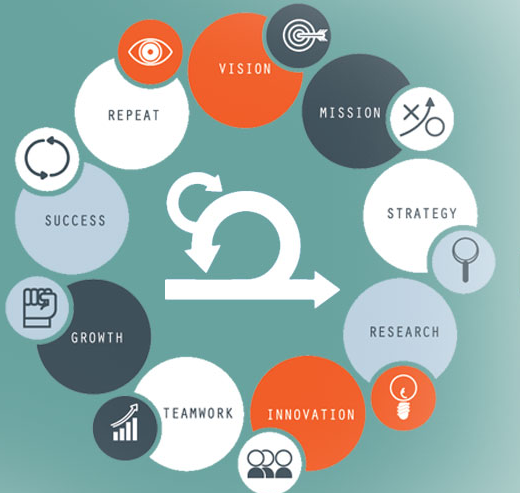
What are the Principles of Agile Methodology?
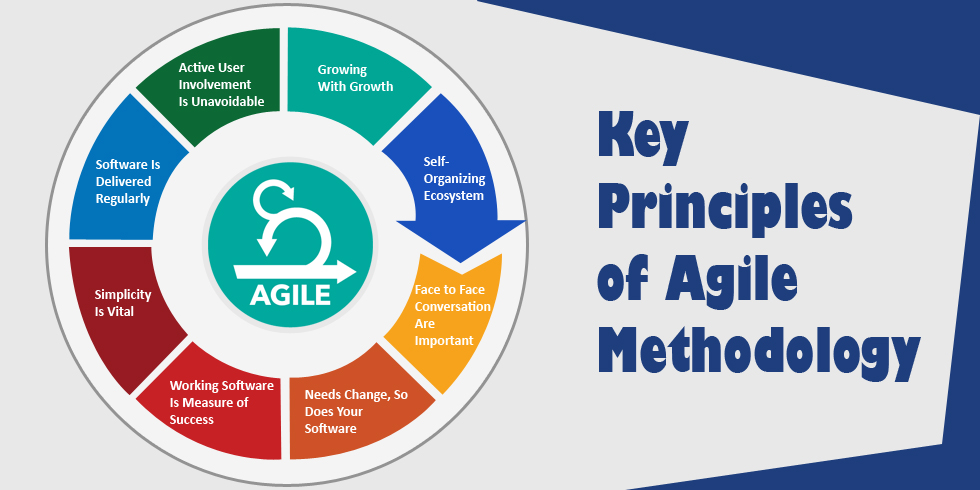
1. Consumer loyalty through quicker and ceaseless programming conveyance : Light-footed spotlights on limiting the time among ideations and send off. The objective is to give a functioning item to clients in the briefest measure of time. In addition, clients can be fulfilled by following regular emphasis process alongside lining up with the market prerequisites consistently.
2. Oblige changing necessities all through the improvement cycle : Lithe empowers changes that may occur during the advancement interaction. In Agile strategies, the changing patterns are noticed, client needs and conduct are concentrated inside and out, and in like manner change demands are worked upon in the spry programming advancement process.
3. Continuous conveyance of working programming : Deft strategies has confidence in separating an item into more modest parts and afterward convey those parts much of the time as runs. Through this technique, these regular smaller than expected arrivals of the item that are constructed will really help the item’s general turn of events.
4. Coordinated effort between business partners and engineers all through the venture : A legitimate correspondence channel does some incredible things for any product project. It’s the collaboration in the lithe model that rules and thus there should be an appropriate correspondence channel set-up between the business partners and the specialized group.
5. Backing, trust, and rouse individuals included : Group inspiration assumes a significant part with the end goal that the productivity and result of the undertaking are sufficient. The spry groups included ought to have great involved insight to guarantee project achievement.
6. Empower up close and personal collaborations : One of the other deft standards rotates around the simplicity with which different groups can work in close joint effort utilizing different video conferencing and different methods of collaborations.
7. Working programming is the essential proportion of progress : From a nimble philosophy viewpoint, clients will react to working programming in a greatly improved way than an end result that is all ideal.
8. Thoughtfulness regarding specialized detail and configuration upgrades nimbleness : Notwithstanding the way that dexterous strategy favors incessant deliveries and changes in necessities, there should be a rigid convention set up for doing lithe exercises, which carries deliberateness to the work. This will just make the future less problematic.
9. Effortlessness : This lithe guideline centers around producing work from particularly those regions where the result is sufficient and good. This implies that the colleagues should have an unmistakable comprehension of the undertaking goals and what is generally anticipated precisely out of them.
10. Self-coordinating groups energize incredible structures, necessities, and plans : Light-footed techniques urges groups to settle on basic business choices rather than relying on a ranking director. The groups should work in such a way that they can characterize the cycles engaged with the undertaking at all levels so the colleagues have a thought concerning what the result can be.
11. Customary reflections on the best way to turn out to be more compelling : The last deft rule expresses that groups should have a learning mentality so they can become familiar with specific cycles they are curious about. Additionally, the groups should find out with regards to the changing client necessities and the patterns happening in the commercial center, so the concerned groups can embrace and carry out accepted procedures.
Conclusion :-
Picking the right technique among the diverse Agile structure types accessible requires a powerful methodology. Continuously consider the benefits and disservices of each to choose the best technique for your business. Go for the structure that can assist you with passing on awesome computerized encounters in the undeniably aggressive market. Note that the right coordinated methodology additionally allures abilities to your group.
This post has been a definite manual for the Agile model’s diverse strategy types. Here, you took in the idea of every one of the most widely recognized Agile systems accessible. Ideally, this article can assist you with getting the technique that best meets your association’s requirements.

